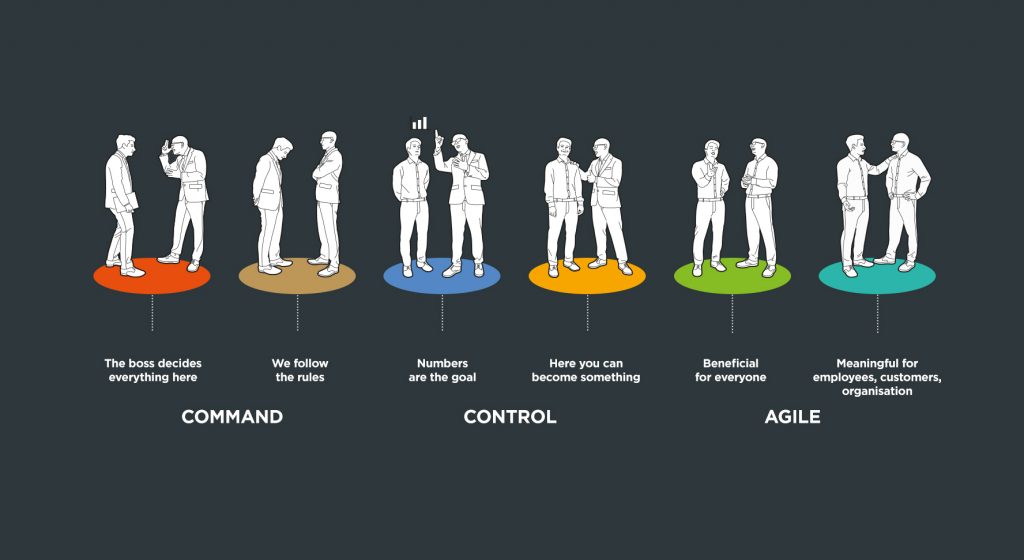What you need to lead an agile team
Agile project management is indispensable in the era of digital transformation, because it provides an agile structure that is able to deal with complexity and uncertainty. Born out of software development, agile working methods are becoming increasingly important.
Whether agile methods succeed or not is a matter of mindset
The successful execution of agile methods is contingent on the mindsets of the management and employees in an organisation. Because agile working requires at least one management mindset that believes “It has to benefit everybody”.
This infographic shows whether a company has the maturity required to practise agile working methods.

Companies where management and employees primarily work under the premises “The boss makes all the decisions here” or “We work to rule” must first work on developing their leadership and corporate culture and identifying their common values.
And companies which only focus on the numbers or on individual career management first need to address their development needs. Here, values development together with targeted management development can prove invaluable when creating the conditions required for agile processes.
It is easy to introduce agile methods in companies that already have a management style that prioritises organising things to everyone’s benefit. They share common values and can work with agility and purpose for employees, customers and the company.
Unfortunately, the mindset of the management can’t be shifted from “command” to “agile” at the click of a switch. In order to actually live agility, we need evolutionary development of the management style and corporate culture. First of all, the next mindset must be practised and consolidated, then the next, and so on, step by step. Having said that, each step is doubly worthwhile, because:
Agile principles and what they mean for employer branding
Professionals who appreciate agile working can assess the suitability of agile methods based on what they know about company. This helps them make appropriate decisions regarding where it makes sense for them to devote their capabilities and creativity – and where it doesn’t.
One thing is clear: it is not just management style and corporate culture that impact the ability of a company to master digital transformation, since with Scrum and other agile methods a company can quickly adapt to changes and constantly question its own business model. The style that management operates in is also crucial for employer branding. There is without doubt a growing number of skilled workers who attach importance to working in a way that has purpose and benefits everyone – and not just among the Generation Y cohort.
We are happy to provide you with more information on how you can deliver agility in your own company with corporate culture and values development.
From ego development to future-proof leadership and corporate culture
Our six mindset model is based on the ego development approach of Jane Loevinger, Robert Kegan and Dr. Thomas Binder.
The six mindset model is presented in the book MINDSET MATTERS, first published in 2019. The book provides lucid insights into the development of leadership, team and organisation. All the examples come from real life and make it easy for you to apply this new-found knowledge in a real-world business environment.

